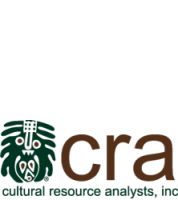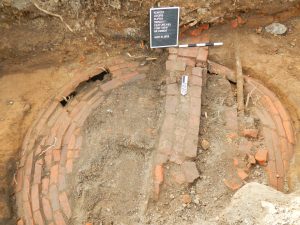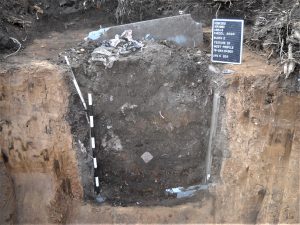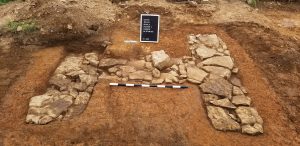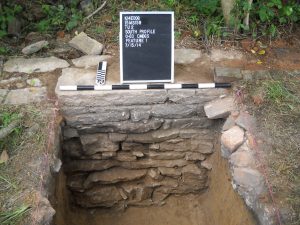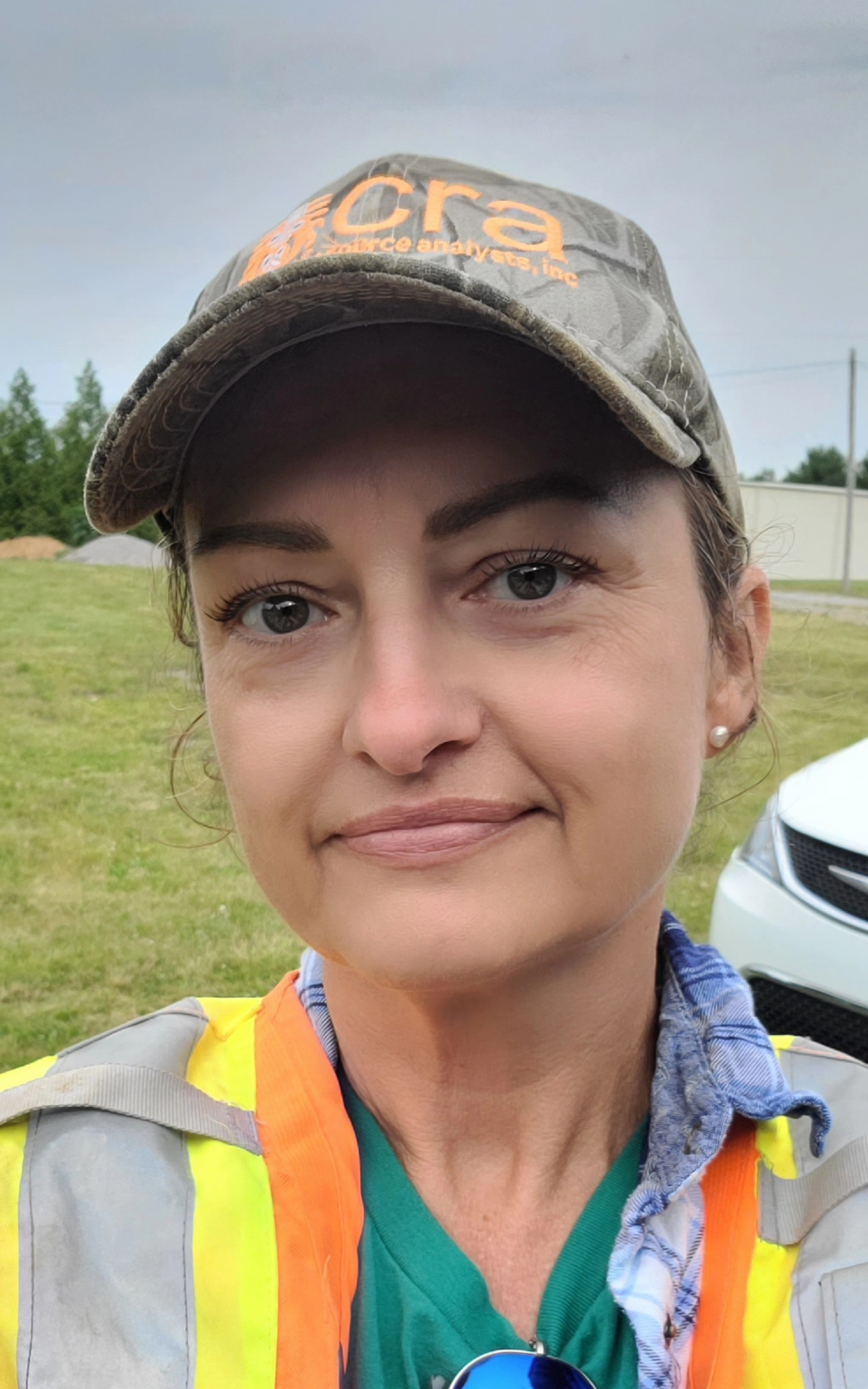
15 Mar CRA Spotlight: Dr. Tanya Faberson
CRA prides itself in the talented staff and the expertise that they bring to every project we do. No matter if it’s a small survey or large data recovery project, multiple people lend their expertise to ensure each project is completed to the best of our abilities. This team approach has served CRA well since first forming in 1983. A number of our people have been with the company for over 15 years. The commitment to quality work and the opportunities provided by CRA and our projects is part of the reason for the longevity of our staff. In a series of blog posts, we will introduce you to some of our staff and what they bring to the company. In this post we will introduce you to Dr. Tanya Faberson who joined the CRA team as a principal investigator in January of 2006. She specializes in historical archaeology with specific interests in urban archaeology, industrial archaeology, and the archaeology of rural landscapes. She also specializes in historic artifact analysis and archival research.
Since she has been a member of the CRA team over the last 16 years, Tanya has directed phase II/National Register of Historic Places site evaluations and phase III/data recovery investigations in Kentucky, Indiana, Illinois, Ohio, and West Virginia. Two of her favorite projects have been for the Newtown Pike Extension project in Lexington, Kentucky, and the Louisville-Southern Indiana Ohio River Bridges project in Louisville and Prospect, Kentucky, as well as Jeffersonville, Indiana, for the Kentucky Transportation Cabinet (KYTC). She has worked on both large scale, multi-site projects, and small scale, single-site projects, and to her, all projects regardless of scale should be focused on properly recording sites and data collection (she is known as “Captain Kodak” by some of the field technicians for being so particular about unit and feature photography in the field…she finds it funny and is sort of proud of this at the same time), accurate artifact analyses, and going the extra mile to synthesize the archaeological field data, artifact assemblages, archival data, and secondary sources. CRM has sometimes been described as being too simplified or not contributing much to interpretations of the past since the information is presented in technical reports. That has never been CRA’s philosophy, and Tanya exemplifies this with her site interpretations and analyses. Tanya also is committed to a philosophy of teamwork and mentorship, and has helped guide various staff members over the years as they progressed from running small surveys to taking on phase II and phase III projects, as well as within the realm of historic artifact analysis.
In her free time, Tanya is an accomplished woodturner and enjoys making bowls and platters on her lathe from responsibly sourced, salvaged wood that is native to Kentucky.
Select favorite projects
Louisville-Southern Indiana Ohio River Bridges (LSIORB) project, Downtown Bridge, Louisville, Kentucky (KYTC Item No. 5-118.00). Dr. Faberson directed the fieldwork and reported on the National Register of Historic Places evaluation, data recovery, and exploratory trenching at Sites 15Jf813–15Jf817, 15Jf820, and Parcel 155 in downtown Louisville, Jefferson County, Kentucky. These excavations entailed mechanical trenching to explore the potential for intact deposits and locate any subsurface features within the project area and feature and test unit excavation. A total of 28 trenches and 20 units were excavated, resulting in the documentation of 64 features and 20 postholes and the collection of approximately 11,000 artifacts.
Newtown Pike Extension Project, Lexington, Kentucky (KYTC Item No. 7-593.00). This project entailed two components, an archival research report and data recovery investigations at Site 15Fa284 in the Davis Bottoms community in Lexington, Kentucky. Dr. Faberson authored the archival report as well as the data recovery final report. The data recovery excavations in this historically African American neighborhood consisted of test unit excavations, trenching, and block excavations in selected house lots within the community. Approximately 38,000 artifacts were recovered.
Old Henry Road (KY 3084) Extension to Ash Avenue (KY 362) Project (KYTC Item No. 5-367.20). This project consisted of the National Register of Historic Places evaluation of Site 15Ol129 in Oldham County, Kentucky, followed by data recovery investigations. Dr. Faberson directed the fieldwork which entailed test unit excavation and mechanical stripping, resulting in the discovery of 7 historic features and the recovery of 2,920 artifacts during the National Register of Historic Places Evaluation. The data recovery investigations entailed the mechanical stripping of 841 sq m, as well as 6 1-x-1 m units and 15 shovel tests. Seven newly discovered features were recorded, 4 of the previously recorded features were further investigated, and 10 postholes were recorded. A total of 4,494 artifacts were recovered during the data recovery. The site was occupied during the nineteenth century, and the features and artifacts are associated with descendants of some of the early settlers of Oldham County.
Spurlock Landfill Expansion Project (Area D). This project entailed the National Register of Historic Places Evaluation of 11 sites, 3 of which contained historic components (15Ms156, 15Ms159, and 15Ms166). Dr. Faberson field directed the work at these three sites and conducted the archival research. She discovered that one of the sites, 15MS159, was the location of the escape of two enslaved African Americans that sparked the Wellington-Oberlin Rescue in Ohio in 1858. Another site, 15Ms166, was the farmstead where an enslaved woman, Eliza, escaped in 1838 with an infant in her arms and made her way across the Ohio River. The story of this woman’s escape and her travel along the Underground Railroad was immortalized in the 1852 book, Uncle Tom’s Cabin, by Harriet Beecher Stow.



